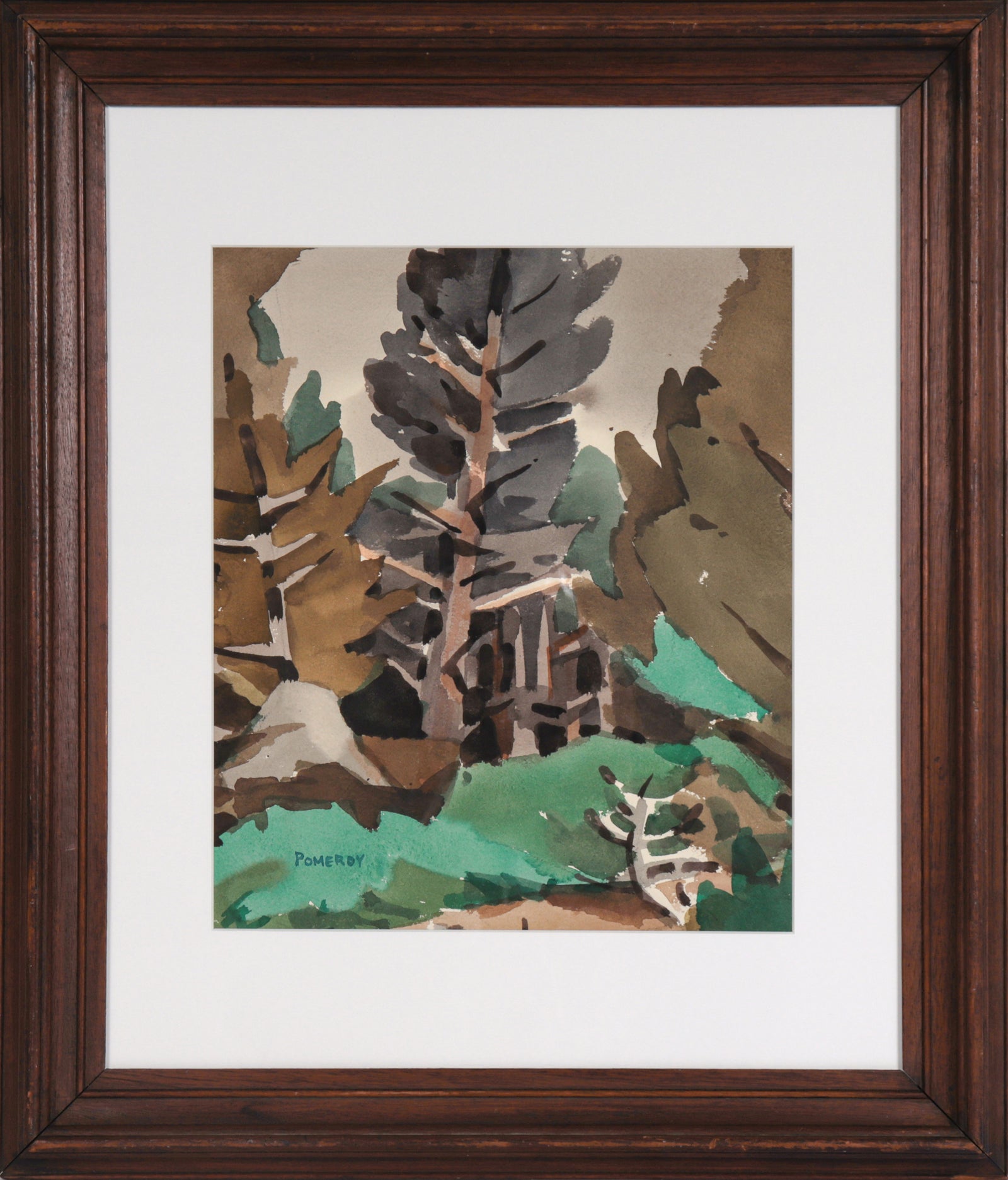Explore | Collect | Design

Frederick Pomeroy
| Previous Artist | Next Artist |
Frederick Pomeroy (1924-2011)

- Frederick Pomeroy (1924-2011) was a Carmel Valley painter and teacher. He studied Art at California College of Arts and Crafts (now CCA) in Oakland during the 1940s and the Ecole des Beaux Arts in Fontainebleau, France in 1951, where he was awarded a prize for painting from the French Cultural Department. He exhibited and traveled widely throughout the U.S. and spent the greater part of his life plein air painting in Carmel Valley, especially Soberanes Point, Point Lobos, the Sierra Nevada Mountains, and Pacific Grove, with his wife, Mary Barnas Pomeroy.
Frederick Pomeroy was born in Oakland, California in 1924. He spent his childhood in Fresno, and upon graduating high school he served in the US Air Force during WWII. Afterwards, he returned to the Bay Area to attend California College of Arts and Crafts where he had been awarded a scholarship. He studied with Otis Oldfield, Carl Beetz, George Post, and Wolfgang Lederer in the 1940s. Following graduation Pomeroy studied painting at the Academie de la Grande Chaumiere in Paris and at Ecole des Beaux Arts in Fontainebleau, France, where he was awarded a painting prize by the French government.
Pomeroy returned to the Bay Area and met his wife, artist Mary Barnas. They settled in Pacific Grove and in 1956 began to build their dream home and art studio in the lush Carmel Valley. Next to the Carmel River, amid the wildflowers and oak-covered hills they raised two daughters, Flora and Anne, while he taught art at the local Tularcitos Elementary school. On weekends the Pomeroys hiked and camped throughout Carmel Valley and in the Sierras, plein air painting side by side and capturing the vivid color and intricacies of light on the Central Coast.
Though he often worked in watercolor when painting outdoors, Pomeroy was also a dedicated oil painter. Inspired by Jacques Maroger’s 1948 text The Secret Formulas and Techniques of the Old Masters, Pomeroy hand-mixed his own paint recipe using linseed oil, beeswax, and litharge. He painted exclusively on Belgian linen for archival reasons, and his oils retain their bright jewel tones as a result of these traditional methods.
Although his lush landscapes and still lifes often evoke qualities of Impressionism, Pomeroy preferred to call his work “intuitive”. He was indeed inspired by the Impressionists, especially Bonnard and Cezanne, but did not follow the strict rules of the movement and preferred to experiment with colors outside of the Impressionist palette. As he said. “I am interested in evoking the illumination of the motif- how light does magic with the coloring.” After retiring from teaching, Pomeroy studied jazz piano and often drew comparisons between his color combinations and musical scales.
Frederick Pomeroy is listed in Who’s Who in American Art and has work held in private collections throughout North America and Europe. He exhibited consistently in the Carmel area from the 1960s-90s, often alongside his wife, Mary. He was represented by The Collector’s Gallery and The Winfield Gallery in Carmel and won several painting awards at juried shows in Pacific Grove. Pomeroy painted until his death in October 2011.
Lost Art Salon would like to thank Frederick’s daughters, Anne and Flora, for bringing this collection to us.
View All _|_ View Available _|_ View Sold
Subscribe
Sign up to learn about new collections and upcoming events
















































